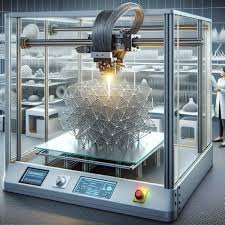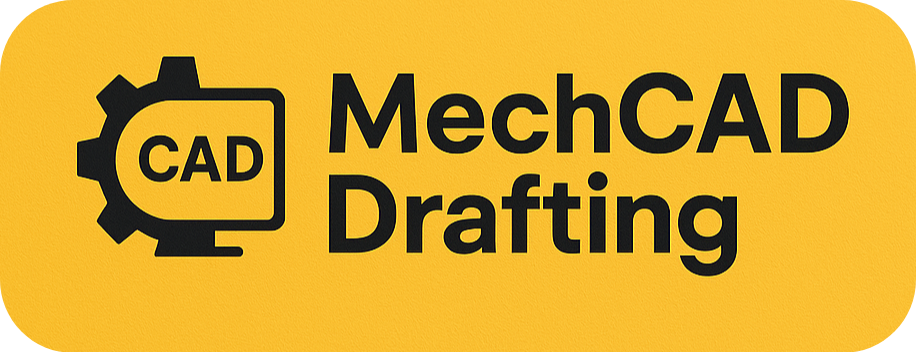3D Modeling for Manufacturing: Precision Engineering in the Digital Age

The manufacturing industry is changing rapidly with the use of 3D modeling that enables industries to design, test and manufacture physical products. In a world that demands speed, accuracy, and innovation, the concept of 3D modeling ensures that there is a smooth transition between the concept and production stage since it presents highly detailed information relating to components, assemblies, and products on the factory floor in digital format.
A digital-first strategy is not a trend, nor an option any more, it is a requirement of competitiveness in engineering and manufacturing. As a product developer of a new consumer item, designer of custom machinery or refiner of a mechanical component, 3D modeling can add clarity, consistency and confidence to the entire production cycle.
What Is a 3D Modeling of Manufacture?
Manufacturing 3D modeling Manufacturing 3D modeling is formulating a digitalized, three-dimensional version of a product or part utilizing a selective CAD package. These models comprise of accurate geometries, material characteristics, tolerances among many other properties necessary in manufacture.
In contrast to mere design sketches or a 2D drawing, with 3D models engineers and manufacturers can simulate the total functioning of a product, not to mention even a singular component, being constructed. These are templates of CNC machining, 3D printing, injection molding and other manufacturing procedures.
The importance of 3D Modeling in Manufacturing
The need to use 3D modeling in manufacturing is understandable since it helps make wiser design choices, better collaboration, and lowers costs of production. This is why it is so important in modern working situations:
- Seeing: The scales and realistic models are not ambiguous.
- Functional Testing: It is possible to simulate the movement, stress, heat, and any other real circumstances.
- Minimized Mistakes: Accurate modeling prevents errors due to wrong dimension or incorrect fit which are both time and cost consuming.
- Accelerated Prototyping: Increases the speed of design cycles by means of quick iterations.
- Better Communication: The same visual data is worked on by the designers, engineers and the clients.
To conclude, 3D modeling enhances any part of the manufacturing workflow 3D model to mass production.
Principal Attribute of 3D Modelling in Manufacture
Whereas 3D modeling in manufacturing is concerned the visual appeal of the shapes is the least of the concerns. It is characterised by:
Dimensional Accuracy
Accuracy in measurements also makes it possible to produce the model to the required measurements.
Material Properties
The similarity of performance can be modeled using the characteristics of materials (weight, strength, flexibility) by engineers.
Tolerance Analysis
Engineers provide reasonable manufacturing tolerances in parts that have to fit or cooperate with others.
Modeling of Assembly
Several components can be jointly modeled and try out as an assembly to provide the correct positioning and operation.
File compatibility
They can export models in formats such as STEP, IGES, STL or DWG which incorporate with a range of manufacturing software.
Such functions render 3D modeling as the most competent and complete type of industry design application.
The Tools that are Best Utilized in 3D Modeling During Manufacturing
A variety of CAD systems exist which facilitate 3D modeling of manufactured parts, and provide a range of design, or simulate, and optimization tools:
- SolidWorks: Standard at the industry level in terms of mechanical parts and assemblies.
- AutoDesk Fusion 360: A collaborative tool that is suited to collaborative product design and modeling.
- PTC Creo: Parametric design and manufacturing: complex mass tool.
- Siemens NX: Industrial enterprises with complex products prefer to use this modeling system.
- Rhinoceros (Rhino): Ideal when it comes to organic shapes and industrial design.
With the help of these platforms, one can be integrated easily and painlessly into CNC, 3D printing and production.
Which industries rely on 3D modeling to make their products?
3D modeling is an important practice in the manufacture of many industries where it enhances the precision of the design as well as the rate of production:
- Automotive: whether it is engine parts or dashboards, 3D models give impetus to each stage.
- Aerospace: Multidisciplinary systems are modeled by narrow limits and simulation testing.
- Consumer Electronics: 3D modeling is done on small internal designs and ergonomics housings.
- Medical Devices: There should be precision in implants, tools, and diagnosing devices.
- Architecture & Construction: Prefabricated systems and parts are digitally modelled.
- Industrial Machinery: Gears to fully assembled machines all the pieces are initially imagined in three dimensions.
The sectors get to enjoy fewer production errors, increased performance, and early time-to-market.
The 3D Modeling Process of manufacturing engineering
Manufacturing 3D modeling is run this way:
Step 1: Requirement Gathering
Some of the input that designers gather include sketches, standard dimensions, technical specifications and end use.
Step 2 Initial Modeling
A 3D model is produced digitally using CAD tools, which capture a geometry and functionality of the part or product.
Step 3; Simulation and Testing
Stress points are tested using virtual simulation as well as thermal effects, behavior of materials and mechanical movements.
Step 4 Optimization of the design
Modifications in the model are carried out depending on the simulation results, usability, and production recall.
Step 5: Integration in Manufacturing
Finally 3D files are exported in form to be ready to print the 3D mechanism to production 3D print or to CNC machine.
Such a flow will result in a product that is not only functional but also has the capacity to be manufactured in volume.
Advantages of Professional 3D Modeling Manufacturing
It has its own unique benefits to outsource 3D modeling activities to professional service agency to manufacture:
Eng-enering Precision
Professional modelers make sure whether designs pass by engineering standards and within tolerances.
Quicker Time-to-Production
Cut on design cycles and put prototypes or products to use in less time.
Cost Savings
Prevent expensive redesign or production mistakes due to inefficient modeling.
Customization
Individual models can be built on certain processes such as die casting, laser cutting or injection molding.
Iterative Flexibility
Designers do not need to rewrite as they can easily update or make tweaks.
The advantages provide an edge of competition in the manufacturing industry in an effort to produce high quality products effectively.
Manufacturing and Prototyping 3D Modeling
Typically prototypes are made prior to large scale manufacturing. 3D manufacturing modeling excels here with machine ready files or files ready to print. This makes it possible to do rapid prototyping that accelerates innovation and gives important information to refine products.
As long as you have opted to use the FDM 3D printing, SLA, CNC machining, or any of the common fabrication methods, the 3D model has to be well designed, so that you can avoid mishaps in production and wastage of time evading unwarranted delays.
Manufacturing Uses of 3D Modeling in the Real World
Case 1: Custom Bike Parts
A startup also applied 3D modeling in the production process, making original handlebars with the internal cable routing. The model was tested, simulated and CNC-machined- saving 40% in production time.
Case 2 Medical Device Development
An orthopedic tools developing company used the 3D modeling to carry out strict ergonomic grip and sterilization process compatibility. The early simulation scaled down the prototyping process to 2 rounds as opposed to 5.
Case No. 3: Small Home Appliances
A new portable blender product team developed it. 3D modeling allowed parts to be fit easily and reduced complexity in part assembly minimum-making them bring the goods to the market in less time and below the cost.
The stories presented show the effect that 3D modeling has on quality, price, and time to market.
Problems That Manufacturing Obtained through 3D Modeling
Many businesses have to deal with the following without professional modeling:
- Expand Assembly errors: Mismatching parts and parts that will not fit.
- Material waste: Expensive errors in inaccurate estimations.
- Slow revisions: Adjustment or updating the designs on slow time.
- We need visualization: Teams have hard time arriving at how a product might appear or work.
These issues are eliminated in 3D modeling manufacturing because this system brings clarity, accuracy, and control over all the design decisions.
Trends of 3D Modeling in the Future of Manufacturing
The manufacture world of 3D modeling is fast developing with the following trends:
- AI-Assisted Design: CAD tools that can indicate improvements or find flaws and faults in the design.
- Generative Design: Algorithms which come up with optimised forms within specified constraints set by the user.
- Digital Twins: Simulations of manufactured individual objects in real-time on a life cycle.
- Cloud Collaboration: Multi-people working on the same 3D model at the same time no matter where they are located in this planet.
- Integrated CAM: One-on-one connection of design and automated manufacturing systems.
These trends are future proofing your design process; they also make you globally competitive.
How to Select the Right Partner to 3D Modeling in manufacturing
In the choice of a service provider these qualifications should be sought:
- Experience in the industry: Pick a person that is knowledgeable about your product niche.
- Software knowledge: Seek teams that are knowledgeable in SolidWorks, Fusion 360 or AutoCAD.
- Turnaround time: Time is of the essence-pick a firm, which has a proven track record of delivering in time.
- Knowledge of how to design to manufacture (K-DFM): Take the greenest model you like the style of, and can manufacture it.
- Changes & revisions: Good partners are there to support you through your development processes.
- Mech CAD Drafting ticks all those boxes and can provide good quality, precision, and custom solutions to the next project.
- Consideration: The Answer to Modern Is 3D Modeling Manufacturing
